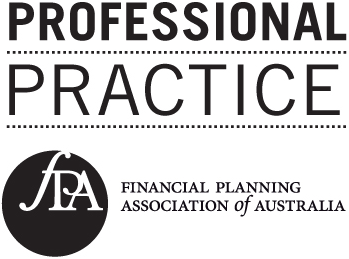Clearing up confusion about accessing super.
Although it seems basic, some super fund members remain confused about exactly when and how accumulated savings can be accessed.

Some years ago, the Australian Taxation Office issued a publication titled It’s your money … but not yet. The publication served to remind members of superannuation funds that, in general, most superannuation benefits were preserved and could only be accessed on meeting a condition of release.
But there remains confusion over just when accumulated savings can be accessed.
In my experience, part of this confusion arises from the tax-free status of superannuation benefits for people aged 60 and over. There is often a lack of understanding around the disconnect between the taxation of superannuation benefits (post-60) and the ability to access preserved benefits. Many believe that because they have turned 60 and their superannuation benefit (paid from a taxed superannuation fund) is tax-free, they can access their benefit.
It becomes the role of the professional adviser to ensure that members, and particularly trustees of self-managed superannuation funds, understand when and how benefits may be accessed by members. In the context of an SMSF, the taxation consequences of getting it wrong, both for the member and the fund, can be significant.
We know superannuation benefits may be accessed once a member turns 65. It is immaterial whether the member has retired or not; superannuation benefits become unrestricted non-preserved upon a member attaining age 65.
Another popular condition of release is “retirement”. In the Superannuation Industry (Supervision) Regulations 1993 [reg. 6.01(7)] two different sets of conditions apply when determining if retirement has occurred and the retirement condition of release met.
Firstly, where a member is aged between their preservation age and 60, retirement occurs when:
The member has ceased work AND they have no intention of becoming gainfully employed again, on either a part-time or a full-time basis (i.e., 10 hours per week or more). There are two conditions that need to be satisfied: the cessation of gainful employment; and an intention never to be gainfully employed again.
On occasion I have come across a situation where a member (who has reached their preservation age) needs or wants to access their superannuation.
Let’s consider the following scenario:
Darryl is 58 years of age, is a member of an SMSF and would like to access his super to pay off his mortgage. For the sake of this example, we will assume the amount he requires is more than 10 per cent of his superannuation account balance, so simply commencing a pension under transition to retirement rules and drawing the maximum income is not a solution.
Darryl then suggests he could retire in order to access his super.
However, Darryl would clearly like to continue to work for some years to come, so he poses the question:
“If I retire in order to access my super, how long must I remain retired before I can go back to work?”
Unfortunately he is asking the wrong question.
In order to meet the retirement condition of release, there must be an intention of never again resuming gainful employment. It is not simply a case of retiring in order to access super benefits, and then returning to work a week, month or year later.
The obligation in being satisfied that a condition of release has been met rests with the trustees of the member’s superannuation fund. In the case of an SMSF, I believe there is a more onerous obligation as the member, also being a trustee of the fund, will know their personal intentions.
The second part of the retirement definition specifically applies to members aged between 60 and 65.
In essence, where a member has ceased an arrangement under which they were gainfully employed, since turning 60 years of age, they have met the retirement condition of release. Notice that there is no requirement to intend never to work again. Technically, a person aged 60 or over could cease to be gainfully employed one day, and commence a new employment arrangement (with another employer, or become self-employed) the following day, week, or month.
However, be aware that if a member is aged between 60 and 65, and they ceased to be gainfully employed before their 60th birthday, they are still subject to the first definition: that is, they have no intention of resuming gainful employment.
It is appropriate to make a passing remark about people who may never have been gainfully employed. While it is difficult to imagine that a person may never have been gainfully employed, it does occur from time to time. For such people, the retirement condition of release does not apply.
They will therefore not be able to access their preserved superannuation benefits until turning 65, unless one of the other conditions of release apply. To access the retirement condition of release, the fundamental condition is that the member must have ceased to be gainfully employed. If a person has never been gainfully employed, they cannot cease to be gainfully employed!
Accessing superannuation benefits and applying the conditions of release can be complex. There are several conditions of release that may be available; however, a clear understanding of the law is essential.
In the case of an SMSF, a review of the trust deed is vitally important – it may be more restrictive than the legislation when it comes to accessing benefits.
Peter Kelly, manager, technical advice, Professional Investment Services
Columnist: Peter Kelly
Wednesday 12 August 2015
smsfadviseronline.com.au
Latest eNewsletters
Hot Issues
- AI exuberance: Economic upside, stock market downside
- Becoming a member of an SMSF is easy, but there are other things that need to be considered
- Investment and economic outlook, November 2025
- Move assets before death to avoid tax implications
- ATO issues warning about super schemes
- 12 financial tips for the festive season and year ahead
- Birth date impacts bring-forward NCCs
- Countries with the largest collection or eucalyptus trees
- How to budget using the envelope method
- Accountants united in support for changes
- Investment and economic outlook, October 2025
- Stress-test SMSF in preparation for Div 296
- Determining what is an in-house asset can help determine investment strategy
- Beware pushy sales tactics targeting your super
- Call for SMSF ‘nudge’ in DBFO package
- How Many Countries Divided From The Largest Empire throughout history
- How changes to deeming rates could affect your pension payments
- Five building blocks that could lead to a more confident retirement
- Investment and economic outlook, September 2025
- Caution needed if moving assets to children
- Evolution of ‘ageless workers’ sees retirement age rise
- Younger Australians expect more for their retirement
- New NALE guidance still has issues
- Airplane Fuel Consumption Per Minute


